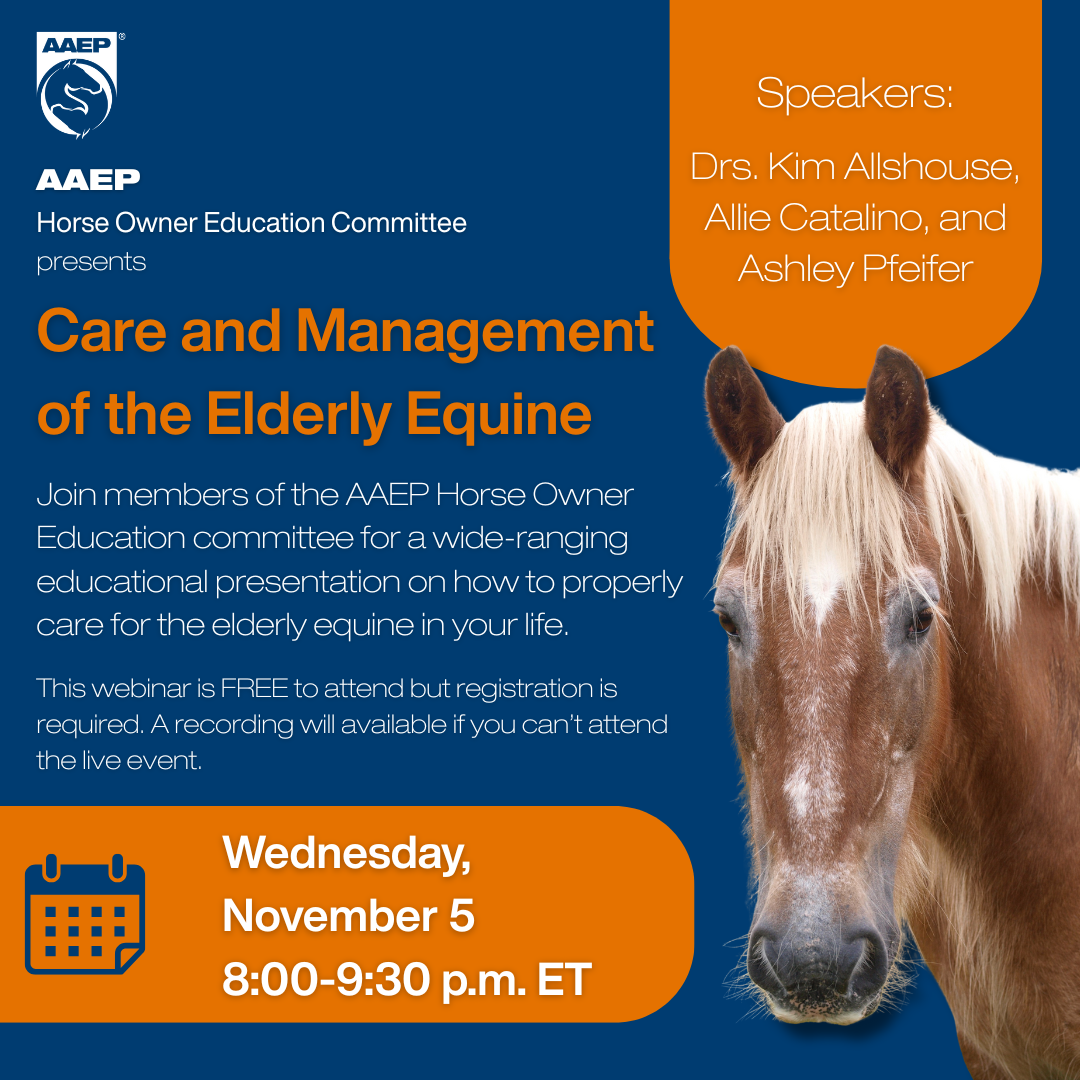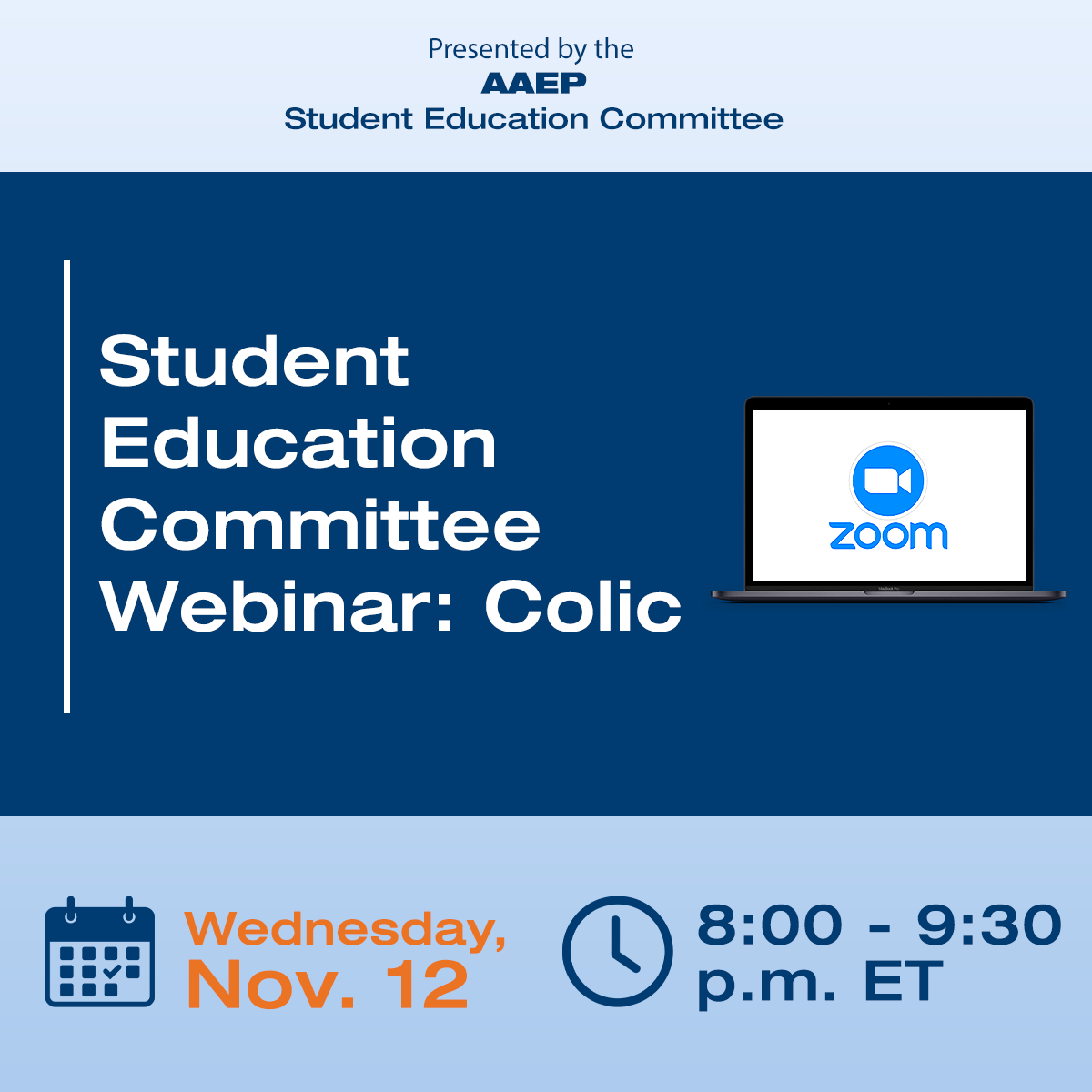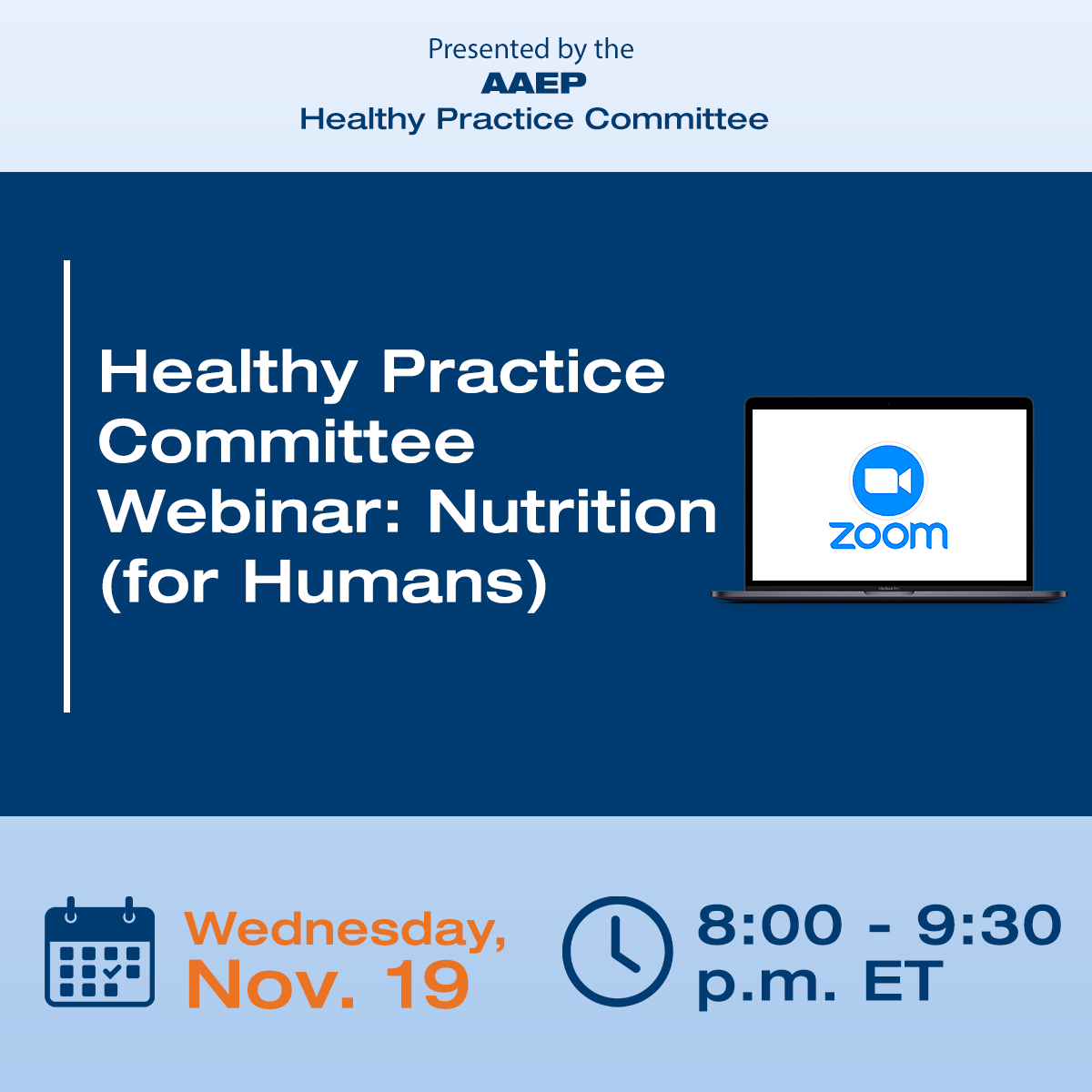Annual Convention & Trade Show
The Annual Convention is the largest meeting of equine veterinarians in the world, anchored by more than 100 hours of continuing education; a 300-exhibitor strong trade show featuring the newest products and services for practice; and numerous social events and small discussion-oriented forums about equine veterinary medicine, as well as professional and personal development.

Resort Symposium
Blue skies, warm sand and turquoise waters await when the AAEP’s 27th Annual Resort Symposium heads to the luxurious Wyndham Gran Rio Mar Rainforest Beach & Golf Resort in Puerto Rico, Jan. 19–21, 2026.

Other Upcoming Events
Horse Owner Education Committee Webinar: Care and Management of the Elderly Equine
Panelists: Kim Allshouse, DVM, Allie Catalino, DVM, Ashley Pfeifer, DVM Just like…
Student Education Committee Webinar: Colic: A Case-Based Review
Panelists: Nimet Brown, DVM, MPH, DACVIM and Vivian Quam, DVM, MA, MS,…
Healthy Practice Committee Webinar: Food for Thought: Practical Nutrition and Healthy Practice(s) for Vets
Panelists: Julie Francis, RD, CD-N; Meggan Graves, DVM and Aimee Eggleston, DVM…
More Continuing Education Opportunities
AAEP Anywhere Online CE
As a service to our members, these Continuing Education courses are available to AAEP veterinarians free of charge.
Microlearning Videos
These short, concise videos are meant to be a modern-day iteration of the classic how-to video. Use them to share procedures & recommendations with colleagues around the world.
Additional CE Opportunities
The following continuing education listings are from other, non-commercial groups or organizations outside of the AAEP.



